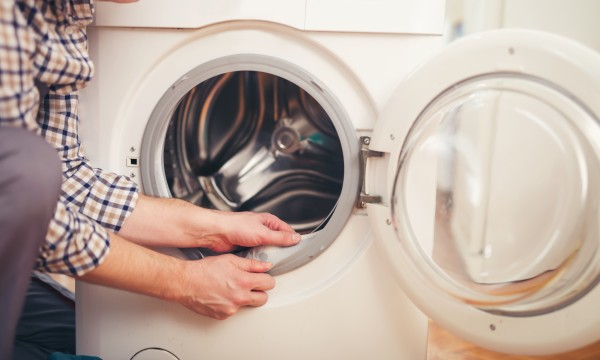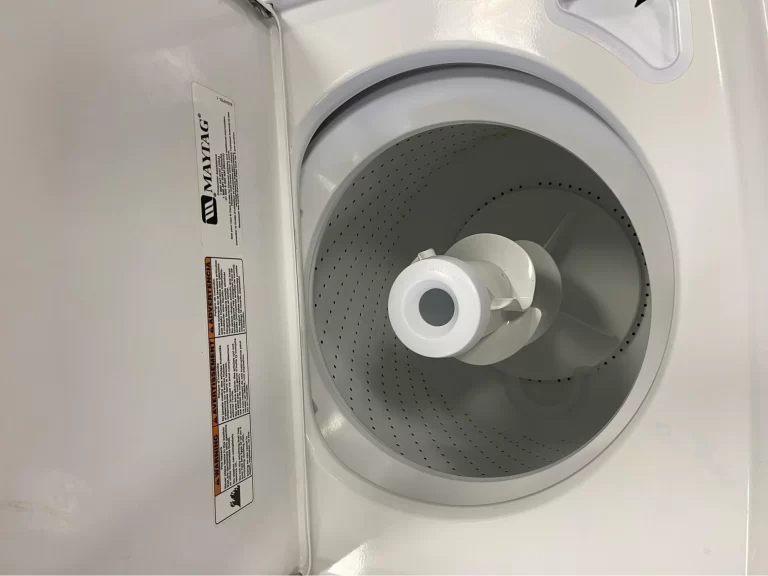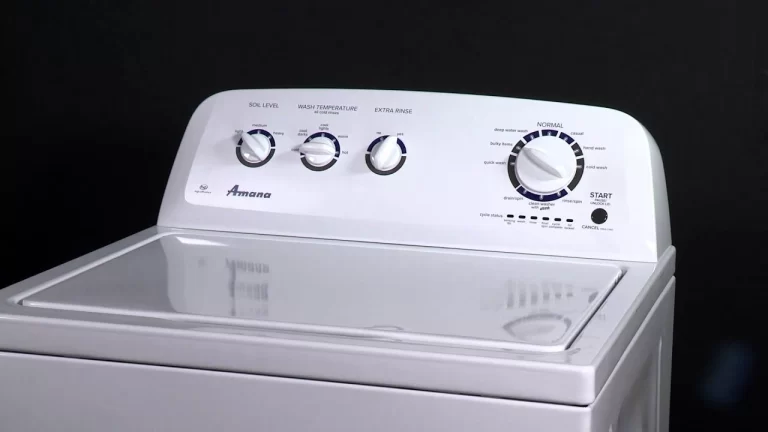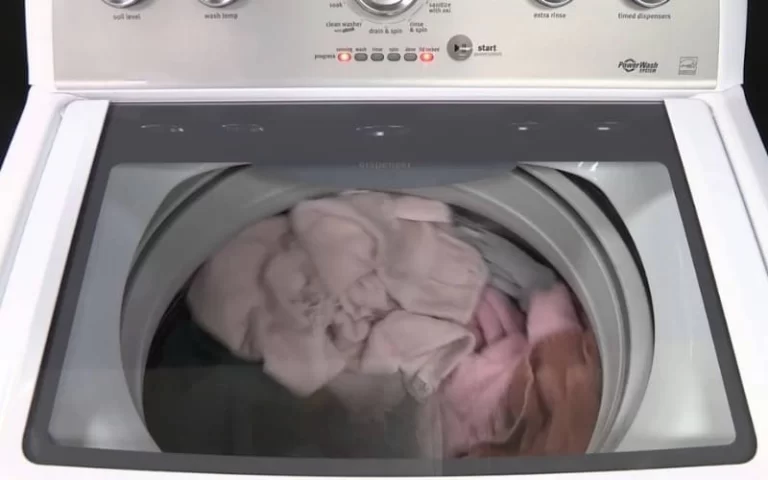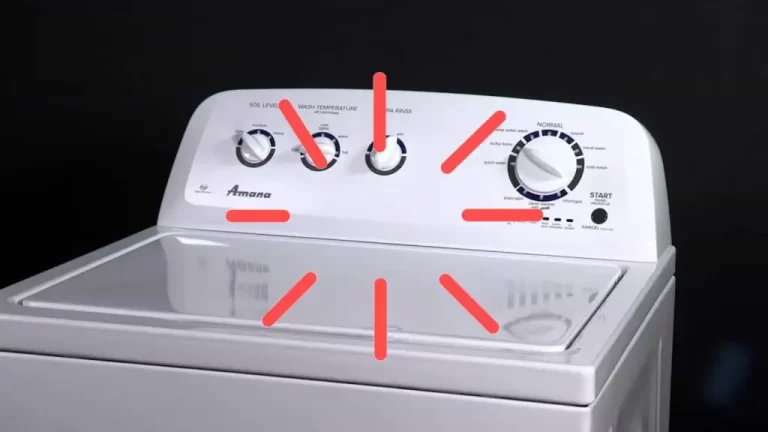Founded in 1892, General Electric (GE) is a venerable giant in the appliance sector, trusted by countless households for their reliability and quality. One of their popular offerings is their range of washing machines. Like any complex appliance, GE washers have their own set of problems, which can often save you time and money on expensive repairs. This comprehensive guide aims to equip you with a thorough understanding of GE washer error codes and how to troubleshoot them.
GE Washer Error Codes are diagnostic signals displayed by the washer when it detects a fault or issue during its operation. These codes indicate specific problems such as water fill issues, door lock errors, control board errors, or motor relay issues, among others. Understanding these codes can aid in troubleshooting and fixing the washer.
Quick Troubleshooting Guide
| Error Code | Issue | Symptoms | Fixes |
| E22 | Water fill issue | Improper filling of water | Check faucets, inspect hoses, check water pressure |
| E23 | Drain pump issue | Water doesn’t drain properly | Inspect drain pump, check drain hose, replace pump if necessary |
| E24 | Lid switch error | Washer doesn’t start or stops abruptly | Check lid switch, ensure proper lid operation, replace switch if damaged |
| E30 | Motor control error | Washer fails to spin or agitate | Inspect motor control board, check wiring, professional replacement if faulty |
| E31 | Pressure switch issue | Washer may fill and drain water simultaneously | Check pressure switch and tube, replace if necessary |
| E32 | Door lock error | Washer door doesn’t lock/unlock properly | Check door lock mechanism, inspect wiring, replace lock if damaged |
| E33 | Overflow condition | Washer overfills with water | Check water inlet valve, inspect pressure switch and tube, replace if necessary |
| E34 | Water temperature sensor error | Water too hot or too cold | Check temperature sensor, inspect wiring, replace sensor if faulty |
| E38 | Lid error | Washer lid doesn’t close/open properly | Inspect lid, ensure unobstructed movement, replace lid/components if damaged |
| E39 | Water level sensor error | Incorrect water level detected | Inspect water level sensor, check wiring, replace sensor if faulty |
| E40 | Motor relay error | Washer may not start or stop abruptly | Inspect motor relay, check wiring, professional replacement if faulty |
| E41 | Control board error | Washer displays erratic behavior or doesn’t start | Check control board, ensure secure wiring, professional replacement if faulty |
| E42 | Door lock error | Door doesn’t lock/unlock properly | Inspect door lock mechanism, check wiring, replace lock if damaged |
| E43 | Lid lock error | Lid doesn’t lock/unlock properly | Check lid lock, ensure secure wiring, replace lid lock if damaged |
| E44 | Drive motor error | Drum doesn’t rotate properly | Inspect drive motor, check wiring, professional replacement if faulty |
| E45 | Drive belt error | Drum doesn’t spin properly | Check drive belt, adjust/replace if necessary |
| E46 | User interface error | Washer doesn’t respond to inputs/start wrong cycle | Ensure clean interface, check wiring, replace interface if faulty |
| E47 | Door lock error | Door doesn’t lock/unlock properly | Inspect door lock mechanism, check wiring, replace lock if damaged |
| E48 | Motor control error | Washer fails to spin or agitate | Check motor control board, inspect wiring, professional replacement if necessary |
| E49 | Motor inverter error | Drum spins too fast/slow | Inspect motor inverter, check wiring, professional replacement if faulty |
| E50 | Heating element error | Water doesn’t reach desired temperature | Check heating element, ensure secure wiring, replace element if faulty |
| E51 | Motor triac error | Washer fails to spin or agitate | Inspect motor triac, check wiring, professional replacement if faulty |
| E52 | Motor error | Washer fails to spin or agitate | Inspect motor, check wiring, professional replacement if faulty |
| E53 | Motor tacho error | Unregulated motor speed | Inspect motor tacho, check wiring, professional replacement if faulty |
| E54 | Motor relay error | Washer may not start or stop abruptly | Inspect motor relay, check wiring, professional replacement if faulty |
What are GE Washer Error Codes?
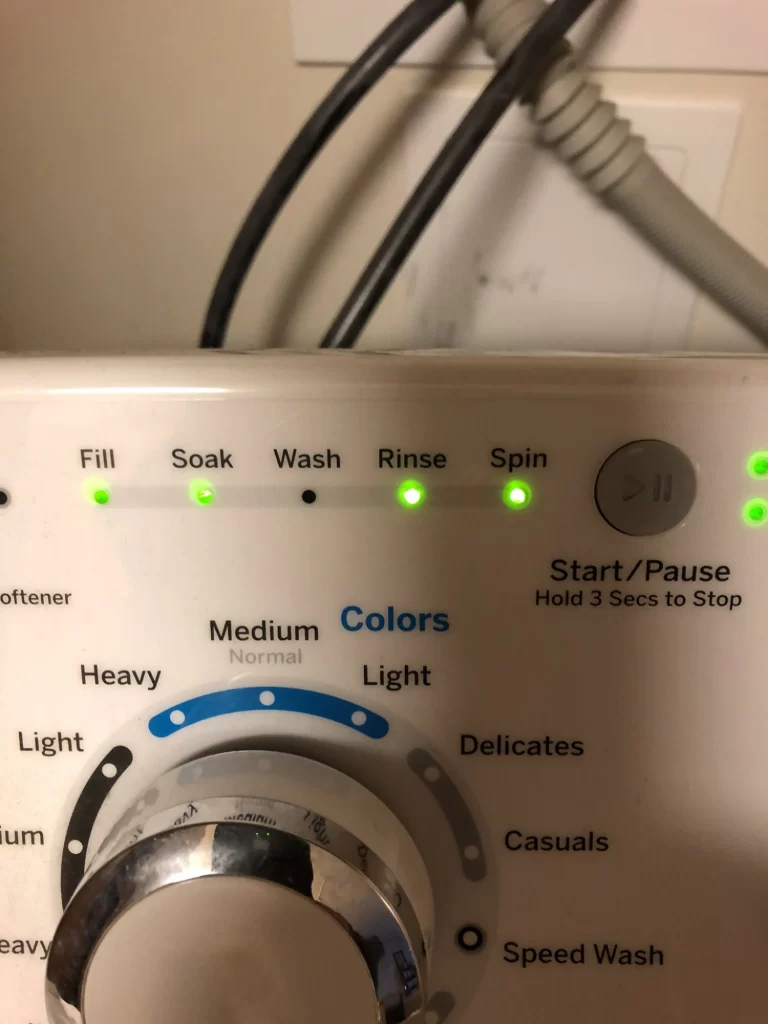
GE Washer Error Codes are a system of signals used by the machine to communicate specific problems or malfunctions that need addressing. Think of them as the washer’s version of a ‘language’, with each error code conveying a distinct message. These codes are invaluable when it comes to GE washer repair, as they can quickly point you towards the nature of the problem and suggest possible fixes.
Common GE Washing Machine Error Codes with Fix
Decoding GE washer codes might seem like cracking an encrypted message at first, but it’s simpler than you might think. Typically, these codes appear on the digital display of the washing machine. For instance, an “E22” code indicates a water fill issue, while an “E38” suggests a problem with the lid of the washer.
1. E22 – Water Fill Issue
Issue: This code represents a water fill issue, indicating a problem with the washer filling with water.
Symptoms: You may notice that the washer does not fill properly, or it overfills with water, which can disrupt the washing cycle.
Fixes:
- Check if the water faucets are fully opened, as partially opened faucets could limit the water flow.
- Inspect the inlet hoses for kinks or blockages. These hoses should be clear and straight for water to flow freely.
- If your home’s water pressure is too low, you might need to consult with a plumber or local authorities about the water supply.
2. E23 – Drain Pump Issue
Issue: The E23 error code signals an issue with the drain pump, a component that helps remove water from the washer.
Symptoms: The washer’s water doesn’t drain out properly or drains slower than it should.
Fixes:
- Inspect the drain pump for obstructions such as lint, hair, or small items of clothing. These can block the drainage.
- Make sure the drain hose is not bent or kinked, as this can hinder the flow of water out of the machine.
- The drain pump may have failed and need replacement.
3. E24 – Lid Switch Error
Issue: This code indicates a problem with the lid switch, which ensures the machine only operates when the lid is closed for safety.
Symptoms: The washer might not start, or it may stop in the middle of a cycle.
Fixes:
- Check the lid switch for signs of damage or wear.
- Verify that the lid is closing and opening properly. A damaged or warped lid may not be triggering the switch correctly.
- If the switch is damaged, you may need to replace it.
4. E30 – Motor Control Error
Issue: E30 denotes an error with the motor control, which manages the operation of the washer’s motor.
Symptoms: The washer fails to spin or agitate, interrupting the wash cycle.
Fixes:
- Inspect the motor control board for signs of burn marks or damaged components. You may need a replacement if it’s damaged.
- Check the wiring between the motor control board and the motor for visible damage.
- You might need a professional to replace a malfunctioning motor control board.
5. E31 – Pressure Switch Issue
Issue: This error code points to a problem with the pressure switch, a component that monitors the water level in the drum.
Symptoms: The washer may fill and drain water at the same time, preventing it from completing a wash cycle.
Fixes:
- Check the pressure switch for malfunctions.
- Inspect the air tube connected to the pressure switch for damage or disconnection.
- If they are damaged or malfunctioning, the pressure switch or tube may need replacement.
6. E32 – Door Lock Error
Issue: E32 code signifies a problem with the door lock mechanism that ensures the washer door is securely closed during a cycle.
Symptoms: The washer door doesn’t lock properly or fails to unlock after the cycle, potentially preventing the machine from operating.
Fixes:
- Check the door lock mechanism for any obstructions or signs of damage.
- Inspect the wiring connected to the door lock, looking for loose connections or visible damage.
- If the mechanism is damaged, you may need to replace the door lock.
7. E33 – Overflow Condition
Issue: This error code represents an overflow condition, typically caused by a faulty water valve or malfunctioning controls.
Symptoms: The washer overfills with water, which can lead to leaks and potential water damage.
Fixes:
- Check if the water inlet valve is stuck open, which can cause continuous water flow into the washer.
- Inspect the pressure switch and its connected air tube. A malfunction here could falsely signal a need for more water.
- If you find a faulty component, such as a stuck valve, you’ll need to replace it.
8. E34 – Water Temperature Sensor Error
Issue: The E34 error code indicates an issue with the water temperature sensor that regulates the temperature of the water in the washer.
Symptoms: The water in the machine is either too hot or too cold, which can affect the efficiency of your washing cycle.
Fixes:
- Check the water temperature sensor for visible damage or corrosion.
- Examine the wiring connected to the sensor for loose connections or damage.
- You might need to replace the water temperature sensor if it’s malfunctioning.
9. E38 – Lid Error
Issue: The E38 error code signals a problem with the washer’s lid, which could include issues with the lid’s hinge or latch.
Symptoms: The washer lid doesn’t close or open properly, which can prevent the machine from starting a cycle.
Fixes:
- Inspect the lid for any visible damage or deformities that could prevent proper closure.
- Check the pathway of the lid to ensure nothing is obstructing its movement.
- You may need to replace the lid or its components if they are damaged.
10. E39 – Water Level Sensor Error
Issue: The E39 error code indicates a problem with the water level sensor that monitors the amount of water in the washer.
Symptoms: The machine detects an incorrect water level, which can affect washing efficiency and potentially cause overflows.
Fixes:
- Inspect the water level sensor for any visible damage.
- Check the wiring connected to the sensor for any loose connections or visible damage.
- If the sensor is malfunctioning, it may need to be replaced.
11. E40 – Motor Relay Error
Issue: The E40 error code is an indicator of a problem with the motor relay, a device that controls power to the motor.
Symptoms: The washer may not start, or it may stop in the middle of a cycle.
Fixes:
- Inspect the motor relay for signs of damage or burn marks.
- Check the wiring connected to the relay for loose connections or visible damage.
- If the relay is faulty, it will need to be replaced by a professional.
12. E41 – Control Board Error
Issue: E41 is indicative of an issue with the washer’s control board, the “brain” of the appliance that coordinates its functions.
Symptoms: The washer may display erratic behavior, fail to start, or not complete cycles.
Fixes:
- Check the control board for visible signs of damage such as burn marks or bulging capacitors.
- Ensure that the wiring and connections to the control board are secure and undamaged.
- If the control board is faulty, it likely needs to be replaced by a professional.
13. E42 – Door Lock Error
Issue: Similar to E32, E42 also represents an issue with the door lock mechanism, which ensures safe operation of the washer.
Symptoms: The door may not lock or unlock properly, preventing the washer from starting or stopping a cycle.
Fixes:
- Inspect the door lock mechanism for obstructions or damage.
- Examine the wiring connected to the door lock for any loose connections or damage.
- You may need to replace the door lock if it’s malfunctioning.
14. E43 – Lid Lock Error
Issue: E43 is an indication of a problem with the lid lock that secures the lid during operation.
Symptoms: The washer’s lid may not lock or unlock correctly, interrupting the cycle or preventing it from starting.
Fixes:
- Check the lid lock for any visible damage.
- Ensure the wiring connected to the lid lock is secure and free of damage.
- If the lid lock is faulty, it will need to be replaced.
15. E44 – Drive Motor Error
Issue: E44 points to an issue with the washer’s drive motor, which powers the rotation of the drum.
Symptoms: The drum may not rotate properly, leading to incomplete or inefficient washing.
Fixes:
- Inspect the drive motor for visible signs of damage or wear.
- Check the wiring and connections to the drive motor for any loose connections or visible damage.
- If the drive motor is faulty, a professional may need to replace it.
16. E45 – Drive Belt Error
Issue: E45 indicates an issue with the washer’s drive belt, a component that connects the motor to the drum, allowing it to rotate.
Symptoms: The drum may not spin properly, leading to incomplete washing or spinning cycles.
Fixes:
- Check the drive belt for signs of wear, tear, or slippage.
- If the belt is loose, it may need to be adjusted or replaced.
- A damaged drive belt will require replacement.
17. E46 – User Interface Error
Issue: The E46 code points to a problem with the user interface, which allows you to control the washer’s settings and cycles.
Symptoms: The washer might not respond to inputs, or it may start the wrong cycle.
Fixes:
- Ensure that the interface is clean and free of any obstructions or debris.
- Check the wiring and connections between the user interface and control board for loose or damaged wires.
- If the interface is malfunctioning, it might need to be replaced.
18. E47 – Door Lock Error
Issue: E47, like E32 and E42, signals an issue with the door lock mechanism.
Symptoms: The washer’s door may not lock or unlock correctly, preventing the start or completion of a wash cycle.
Fixes:
- Inspect the door lock mechanism for obstructions or signs of wear.
- Check the wiring connected to the door lock for any loose connections or visible damage.
- You might need to replace the door lock if it’s malfunctioning.
19. E48 – Motor Control Error
Issue: The E48 error code indicates a problem with the motor control, similar to the E30 error.
Symptoms: The washer may not spin or agitate, disrupting the washing process.
Fixes:
- Check the motor control board for signs of damage or burn marks.
- Examine the wiring between the motor control board and the motor for any visible damage.
- If the motor control board is malfunctioning, it may need to be replaced.
20. E49 – Motor Inverter Error
Issue: E49 denotes an issue with the motor inverter, which adjusts the motor’s speed during a cycle.
Symptoms: The drum may spin too fast or too slow, affecting the washer’s performance.
Fixes:
- Inspect the motor inverter for visible signs of damage or wear.
- Check the wiring and connections to the motor inverter for any loose connections or visible damage.
- If the motor inverter is faulty, it may need to be replaced by a professional.
Preventing GE Washer Problems
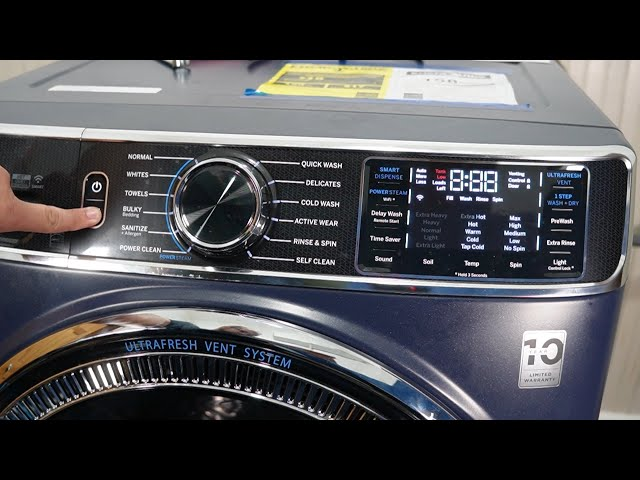
Preventing issues with your GE Washer involves routine maintenance and mindful usage. Here’s how you can ensure your washer runs efficiently for a long time:
- Regular Cleaning: Regularly clean your washer to prevent build-up of detergent, fabric softener, or grime. Many GE washers have a self-cleaning cycle you can run monthly, or you can use a washing machine cleaner. Don’t forget to clean the door seal and detergent dispenser, which can also accumulate residue.
- Inspect Hoses: Check your washer’s fill and drain hoses periodically for any signs of wear or damage. Over time, these can become worn and may crack or leak. It’s advisable to replace your washer hoses every 3-5 years, or sooner if you notice any signs of wear.
- Avoid Overloading: Overloading the washer puts a strain on the motor and can also lead to unbalanced loads, which can cause additional issues. Always adhere to the manufacturer’s instructions about load size.
- Use Proper Amount of Detergent: Using too much detergent can lead to soap scum build-up in your washer, potentially causing operational issues. Follow the detergent manufacturer’s recommendations, and consider using HE (High-Efficiency) detergent if your washer is an HE model.
- Level the Washer: Ensure your washer is properly leveled. An unbalanced washer can vibrate excessively, which can lead to premature wear on the motor, drum, and other components.
- Clean the Filter: Many GE washers have a lint filter or trap that needs to be cleaned periodically. A clogged filter can affect your washer’s draining efficiency and may lead to other problems.
- Regular Professional Inspection: Consider having a professional perform a routine inspection of your washer every couple of years. They can spot potential issues early and perform preventive maintenance.
Remember, the best defense against washer problems is preventive care. By keeping up with maintenance and using your machine correctly, you can increase the lifespan of your washer and minimize the likelihood of error codes.
Essential Tools for Fixing GE Washer
Before you dive into DIY washer repair, having the right set of tools can make a big difference. Here’s a list of tools that could come in handy:
- Screwdrivers: A set of both flathead and Phillips-head screwdrivers in various sizes.
- Wrenches: Adjustable wrenches and socket set for removing and securing nuts and bolts.
- Pliers: For gripping small objects and bending wires.
- Multimeter: Useful for testing electrical components.
- Work Gloves and Safety Glasses: Safety should always be your first priority.
Having these tools on hand can help you troubleshoot minor GE washer issues at home. However, for major repairs or when in doubt, it’s always advisable to reach out to GE customer service or a professional repair service.
FAQs
What is the first step I should take when I see an error code on my GE Washer?
Understanding what the code stands for is the first step. Refer to the user manual or online guides to decode the error. Try basic troubleshooting as suggested for the specific error code. If the issue persists, consider calling in a professional.
How can I reset my GE Washer when it’s showing an error code?
Unplugging the washer from the power source for about a minute and then reconnecting it can reset the system. However, if the error code reappears, there’s likely a persistent issue that needs attention.
Are there any risks to using my GE Washer if it’s showing an error code?
While some errors may not affect the immediate functionality of the washer, they could lead to bigger, costlier problems over time. It’s always safer to address the error code promptly to avoid potential damage or safety hazards.
How do I know if I need professional help to fix the error code on my GE Washer?
If basic troubleshooting doesn’t resolve the issue, or if the error code indicates a serious problem like a motor or control board issue, it’s advisable to seek professional help. Working with electrical components can be risky if you don’t have the proper knowledge and tools.
Are error codes the same across all GE Washer models?
While many error codes are standardized across GE models, there can be model-specific codes as well. Always refer to your specific model’s user manual for the most accurate information.
Conclusion
Understanding GE washer error codes can save you a lot of time and unnecessary stress when your machine isn’t working as expected. Regular maintenance and careful usage can go a long way in ensuring a longer lifespan for your appliance.
While some issues can be resolved with a bit of DIY spirit and the right tools, remember that certain problems will require professional attention. Don’t hesitate to contact professional GE appliance repair services for complex issues. After all, proper repair ensures the longevity of your appliance and the safety of your home.

